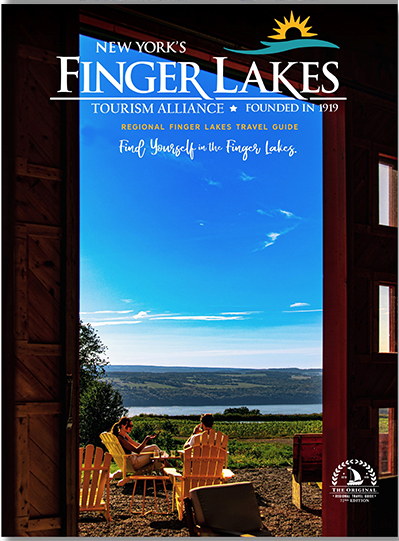Opening on Saturday, May 6, a new multi-media exhibit in Genesee Country Village & Museum’s John L. Wehle Gallery will explore how 19th-century Americans performed and navigated a changing landscape of gendered fashion. Becoming Gendered: Garment as Gender Artifact pulls at the thread of how dress provides the world with visual cues to interpret identity. Color, fabric, texture, cut, and design are the tools of speech in the language of garment. Gender is a dialect of this wearable language, and changes in fashion parallel changes in society’s understanding of gender. What it means to be a man or a woman, both, or neither, evolves across the decades. So too, do the garments that allow individuals to inhabit gender identities. The exhibit begs the question - do we make the clothing, or does the clothing makes us? The exhibit will run for the 2023 and 2024 seasons in the John L. Wehle Gallery, and was made possible with support from Trillium Health. Click here to learn more about the exhibit: https://www.gcv.org/becoming-gendered-garment-as-gender-artifact/
Exploring gender through fashion
Becoming Gendered will showcase a wide variety of historic garments for men, women, and children spanning over a century. Hegemonic gendered clothing for adult men and women is compared to the development of recreational and leisurewear. Understructures for men, women, and even children, are exhibited as evolving tools worn to achieve gendered ideals. Challenging these 19th-century gender norms in fashion and garment are the Dandy, the Bloomer, Dress Reformers and Women’s Rights advocates, the lady cyclist, female impersonators, and the Public Universal Friend: a religious leader who may have identified as non-binary if that word was available to them in the 19th century. Hodinöhsö:ni’ (Haudenosaunee) garments are also exhibited as an entry-point into the discussion of how the Western gender binary system directly affects the gendering of 19th-century Hodinöhsö:ni’ clothing.
"19th-century Americans were faced with many of the same questions about visual gender presentation that we are still grappling with today," says Curator Brandon W. Brooks.
Visitors to Becoming Gendered will explore the changing landscape of gender throughout the 19th century through a variety of media. Historic fashion will be complemented by imagery in the form of daguerreotypes, ambrotypes, tin types, cabinet cards, carte de visite, and early 20th-century photography. These images both record and depict how Americans actually dressed in the 19th and early 20th centuries, conveying the nuances of visualized gender identities and gender roles to modern eyes. Portraiture of children illustrates the gendering of children and children’s bodies. At the same time, newspapers, theatrical and minstrel broadsides, sartorial illustrations, and fashion plates display the lively discussion around gender and gendered clothing that has remained relevant into the present. Historical clothing and objects on display in the exhibit have been lent by a number of regional museums and historical societies including Rochester Museum & Science Center, the New York State Museum, the Holland Land Office Museum, The Oneida Community Mansion House, The Ontario County Historical Society, The Yates County History Center (Scherer Carriage House), The Strong National Museum of Play, Gandondagan, and more.
"We want guests to the exhibit to question what exactly is masculine or feminine clothing, what makes clothing read either masculine or feminine, and how do the ways in which we clothe ourselves dictate how we operate within society." – Brooks
Curator-Hosted Talks and Guest Speakers
Curatorial talks and guest speakers throughout the 2023 season will further enrich the exhibit. Upcoming talks include “‘Being neither man nor woman’: Gender and the persona of the Public Universal Friend” with Dr. Paul Moyer (Professor in SUNY Brockport‘s Department of History) on Saturday, May 27, from 2 – 3 p.m., “Silent Seduction: Gendered Fashion Flirtations” with curator Brandon Brooks on Saturday, June 24, from 1 – 2 p.m., “Fashion in Flux: Transitional Fashions of the 1820s A Historical Get-Ready-with-Me” with curator Brandon Brooks on Saturday, August 26, from 1:30 - 3 p.m., and more. Click here to explore the schedule of upcoming programs in the John L. Wehle Gallery. Admission to the John L. Wehle Gallery is included with general Museum admission, as are gallery talks and programs, unless otherwise noted.
The John L. Wehle Gallery at Genesee Country Village & Museum
Established by Museum founder John L. Wehle, the collection in the John L. Wehle Gallery unites Wehle’s passions for art with interests in hunting, sports, wildlife, and conservation. Spanning the 17th to 20th centuries, paintings, drawings, prints, and sculptures document the changing taste and styles of sporting and wildlife art. The Gallery traces the history of equine, canine, racing, driving, angling, hunting, and shooting art as well as wildlife from diverse areas of the United States. The Gallery also houses the extensive Susan Greene Historic Costume Collection, featuring more than 3,500 rare, mostly 19th-century garments and accessories. In addition to Becoming Gendered, the exhibit Duck, Duck, Shoot! The Story of American Warterbirds is also on view for the duration of the 2023 season. This exhibit explores the hunting of waterbirds, moving from sustenance hunting to excessive hunting, from near destruction of waterbirds to an environmentally conscious and sustainable American pastime. Click here to learn more about Duck, Duck, Shoot!: https://www.gcv.org/duck-duck-shoot-the-story-of-american-waterbirds/
More information about the John L. Wehle Gallery and GCV&M collections can be found here: https://www.gcv.org/the-john-l-wehle-gallery/
